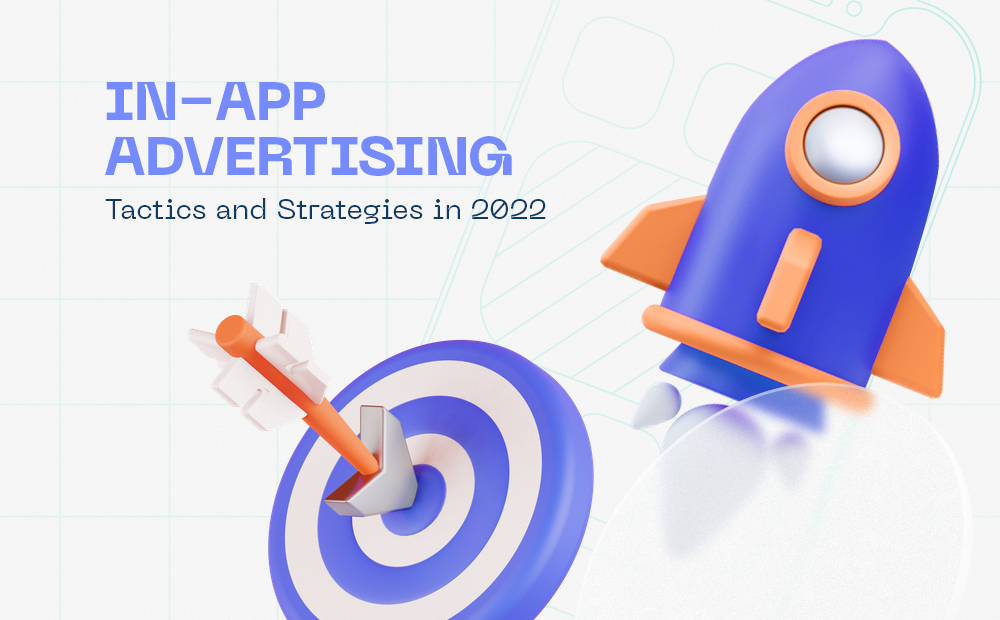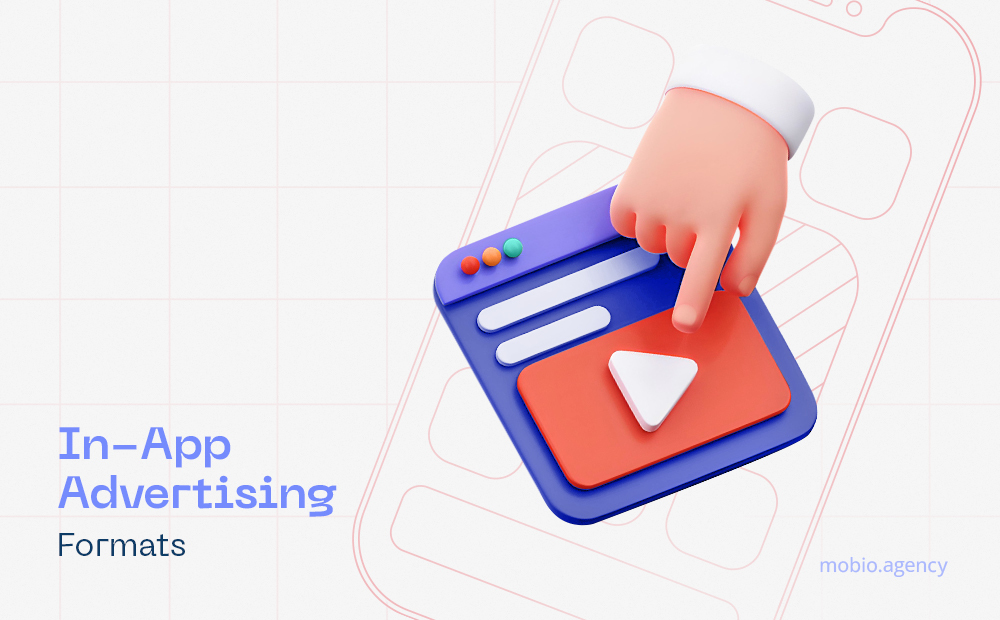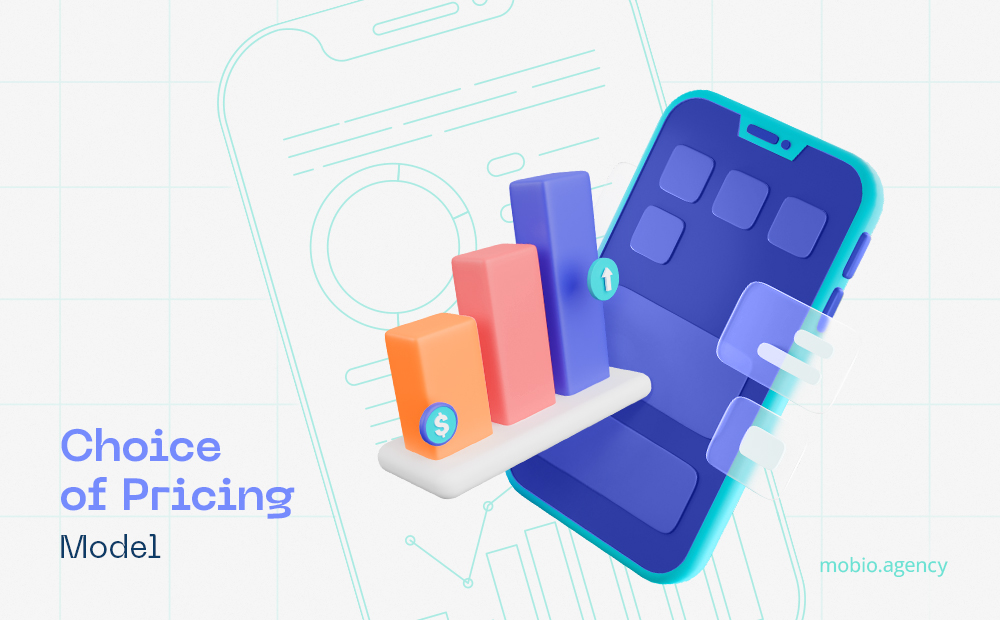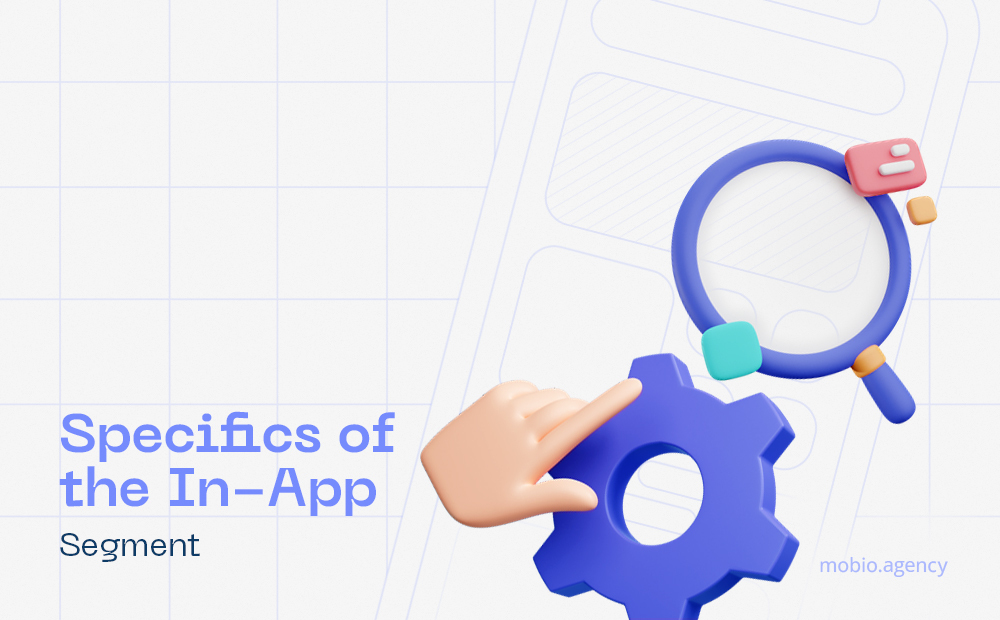In-app Advertising Tactics and Strategies in 2022 | Mobio Group

Today, mobile apps have become a part of everyday life. People use apps for almost everything — communication, recreation, entertainment, education, shopping. There are more active mobile devices in the world than people. Almost everything that is used in devices can be a platform for advertising. Considering how many apps appear in the store and on users’ gadgets every day, in-app advertising is an opportunity to get the greatest audience coverage with a significant increase in advertising campaign revenue. In addition to using in-app advertising as a means of obtaining direct financial benefits, advertisers improve their competitive position by promoting their own brand and increasing customer loyalty. In this article Mobio Group will talk about in-app advertising tactics and strategies.
In-App Advertising Formats

In-app provides a large selection of ad formats that you can use for your creatives. The choice of the type of advertising depends on the goals and strategy of your campaign and the budget that you are willing to invest in promotion. The main formats of in-app advertising:
1. Banner advertising
Trivial advertising, when an animated or static banner is shown in a certain part of the screen. It can be shown on top of content, appear at the bottom of the screen, close on click, or after purchasing an extended version of the app. This type of advertising is still leading in terms of the number of views. Despite the fact that users are used to and less likely to peer at pop-ups, it is more difficult to ignore the banner on a mobile device than on a desktop. Standard banners are productive when using outreach marketing tactics.
2. Native advertising
It organically combines with the interface of the content in which it is broadcast, and looks like an integral part of it. Such advertising is designed in accordance with the design of the application, reduces the feeling of intrusive pressure on the user, thereby increasing the chance to carry out the desired actions.
3. Interstitial advertising
Full-screen ad format in transitions between actions within the application or during its loading. The concentration of the user’s attention on the ad is ensured by filling the entire screen space.
4. Reward advertising
The user voluntarily agrees and receives a reward for watching video ads. This format is more often used for advertising games, but the use of a promo code as a promotion, free use of the app for a certain period, or access to its additional features pushes the boundaries of this type of in-app. Many authors of articles analyzing the preferred method of in-app advertising cite the AdColony report published by eMarketer, according to which 75% of mobile publishers rated rewarded video advertising as the most effective method of monetizing mobile apps.
5. Game advertising
This is a format in which the user can directly contact the advertising product. Interactive mechanics allow you to get an emotional response that will focus the user’s attention for a longer time than regular advertising. Playable ads go beyond the gaming industry and show high engagement rates.
Having studied the in-app formats, you can decide on the tactics of your advertising campaign and choose specific actions to implement your initiatives. A well-animated and well-placed banner with a low cost can bring a good income. Videos provide good monetization and guarantee to attract attention from users. Rewarded advertising gives confidence in the interest of a real consumer. As you can see, there are practically no hard recommendations. Each advertising medium has its own characteristics. There is no one “best” remedy for all situations. The size of the advertising budget, the characteristics of the target audience, the specifics of the advertised product, the geography of advertising activity and other parameters affect the choice of the type of advertising used. Often the concepts of advertising campaigns are not based on any one approach, but include a combination of several of the main formats considered.
Choice of Pricing Model

Depending on the purpose of your advertising campaign, the pricing model is determined. This is typical not only for in-app sites, but for the entire advertising market as a whole. The brand awareness strategy and the user engagement growth strategy involve the use of different pricing models. There are certain advertising metrics that are used in marketing to measure the effectiveness and profitability of an advertising campaign. By learning their basics, you can calculate which of these advertising models will give you the most bang for your buck.
CPC (cost per click) is an advertising metric that measures the cost per click on one of your ads. CPC is a rather convenient model for an advertiser, since he only needs to pay for the real manifestation of the user’s interest, in this case, per click. And this is communication with the consumer, in which you can turn a visit to your landing page into conversions. CPC monitoring will give you an idea if you are generating enough ad traffic at a fairly low cost to make your PPC campaign profitable. It is reasonable to use the CPC model if you set up goal tracking at the beginning of the campaign launch, you have not yet accumulated conversion statistics or you cannot pay for them yet.
CPM (cost per mille) is an advertising metric that reflects the cost per thousand impressions of your ad and does not depend on user actions. In-app, this pricing model is popular in banner and native ad formats. For advertisers whose strategy is to promote the brand, the CPM model is one of the leading ones.
CPA (Cost per Action) is an advertising metric that measures the cost of attracting customers with your advertising campaign. The CPA model assumes that the advertiser pays only for certain user actions. An implementation in an application can be registration, payment, form submission, page browsing, and so on. This metric is considered the safest, as you are guaranteed to get exactly the action that you predicted.
CPI (cost per install) is an advertising metric that reflects the cost per install of a software, game or application. The CPI model is most often used by developers of mobile applications focused on attracting new users and increasing the number of installations of their product. This method results in the highest return on advertising spend (ROAS) and is one of the simplest and most transparent metrics in in-app marketing.
The choice of pricing model directly depends on the purpose of your advertising campaign, segment and budget. The monetization strategy is selected separately for different applications, and even within the same application it may vary for different campaigns. Using trackers, you can test more budget-friendly CPC and CPM models, tune analytics, and reach a high return on advertising investment.
Specifics of the In-App Segment

The in-app tool operates within the framework of a typical marketing strategy, subject to general rules. But this segment is developing rapidly, providing all interested parties (both advertisers and publishers) with new opportunities, while standard platforms are gradually exhausting themselves. Habitual traffic sources (myTarget, Facebook, Google, etc.) do not fully reveal the potential of the advertising strategy, or even completely leave the market. In-app is a trend today, and if you understand it, taking into account all the advantages and minimizing the disadvantages, you can get good results.
The reach of the audience grows in proportion to the activity of mobile traffic. Users are spending more and more time in apps and games, so in-app is good for reaching out to potential consumers who could not be found in the usual sources. Unlike desktops, mobile devices are available to the user anywhere at any time. Modern mobile phones are equipped with computing features, larger screens, higher performance, optimal storage capacity, longer battery life, which inevitably leads to more hours spent by the user in mobile applications.
The quality of traffic can also be attributed to the audience specifics of in-app — apps are usually used by real consumers, so the problem of “cheated impressions” in in-app advertising is minimized. The actual audience implies guaranteed viewing of an advertisement (video, mini-game) and sustainable conversions. In-app advertising platforms offer advertisers a truly “live” target audience, providing an opportunity to target by categories of applications within which ads will be displayed and selecting applications that are similar in theme. The quality of the audience is ensured by the impact of advertising on users who already use applications of this kind. Ranking consumers by gender and age becomes meaningless if the system immediately determines that a person uses similar apps.
In order to achieve the desired indicators in terms of the volume and quality of traffic, one should take into account the problem of fraud, which is typical for the entire mobile advertising market. Fraud is a variety of ways to mimic the actions required to meet an advertiser’s KPI. It should be recognized that the types of mobile fraud are quite diverse — click flooding, fake devices, interception or simulation of installs. No one is 100% safe from fraud. Fraud can drain your entire advertising budget without generating any real income. However, you can significantly reduce the risks if you entrust the work with your creative to a reliable, proven team of professionals. Our agency Mobio Group strives to maintain the highest level of traffic security and quality for our advertiser clients by being certified by independent anti-fraud systems and launching 100% streaming traffic verification technology through Fraudscore.
Any advertising strategy should be built consistently, be comprehensive and integrate as many acquisition channels as possible, as they affect the conversion at each stage of the sales funnel, which in turn determines the payback of the mobile application. It’s a long journey from the conception of an idea to reaching the final goal of your creative. A profitable business is the result of the purposeful implementation of a well-designed promotion strategy.
For successful competition in the in-app environment, attention should be paid to many factors. Your product should be visually attractive, have an intuitive interface, work correctly, and have no omissions or bugs. You need to quickly troubleshoot problems, make changes to the product, analyze key numerical indicators such as LTV (customer lifetime value) and Retention Rate (retention rate), consider which stages of the sales funnel will be built into your creative, create separate events for them and configure transfer them to a mobile tracker, track conversion drawdowns, study various traffic channels and in-app networks, analyze product ratings and reviews on it. Competent specialists who effectively carry out the promotion of mobile applications can successfully cope with the flow of such specific tasks. Having studied the confirmed cases of cooperation with large clients, you can entrust the promotion of your creativity to professionals, saving a significant amount of money, time and labor costs.
Qualified experts of our mobile marketing agency Mobio Group cooperate with the client at all stages of mobile application promotion, providing professional support in those segments where the client is not a specialist.
Having developed our own FEEDWISE in-app traffic platform, we successfully perform the following tasks:
- adaptation of convertible sources to the corresponding volume of traffic using both internal traffic purchases and external sources;
- automatic selection of suitable sources based on the proprietary Tracemetrix platform (with machine learning optimization);
- optimization of any goal in the funnel and keeping CPA/CPI in a given range;
- automatic blocking of fraudulent sources, real-time tracking by CTIT.
Redistribution of the advertising budget to other traffic sources opens up great opportunities for in-app sites. The flexibility and variability of in-app promotion strategies can be a great start to your mobile app campaign.


